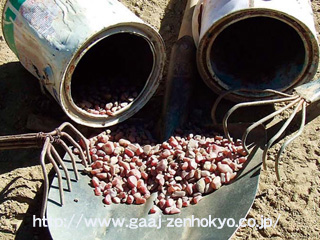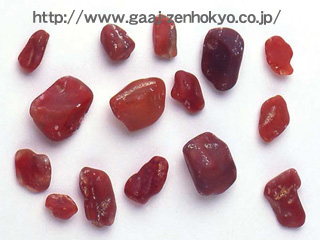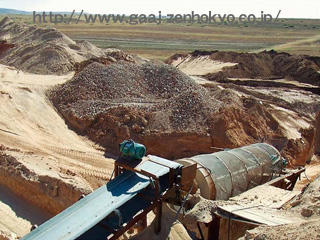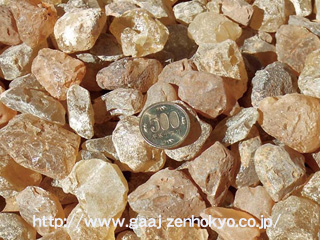Alluvial transport has rounded the andesine crystal, and most of rough stones are translucent to transparent with their size mostly under 1 cm in diameter but the largest piece reaches to 4 cm (fig-7). The colour of andesine crystals unearthed was mostly orangey-red and deep red colour was not so common (fig-8). Some crystals also show green colour and colorless partly. Such as brown, yellow or colourless crystal were not recognised. The annual gross production of north and south mining areas in total is 700-800 kg, of which 30-50 kg is in gem quality.
|
||||||||||||||||
The Andesine from Inner Mongolia is produced in the secondary deposit of sand and gravel in Gu Yang prefecture, north of Baotou city. The mine is situated in Yinshan tectonic belt of Mesozoic-Cainozoic era (fig-9). Andesine is mainly yielded from farmland, field or mountainous area with distribution range of 20 km from east to west and 5 km from north to south and 100 square kilometres in dimensions. Mining has been operated in Shuiquan and Haibouzi villages, producing 100 tonnes annually (fig-10). Andesine crystals retrieved are granular with high transparency in good quality and some of them show solvent etching feature on the surface (fig-11). Many crystals have size 0.3-5.5 cm and 1-2 cm size occupies 70-80 % of them. Most of andesine show pale yellow colour, and colourless or deep yellow colours are seen but not in common, while andesine in other colours has not been produced from this area (fig-12).
|
||||||||||||||||
|
More detail information will be introduced on Winter issue of Gems & Gemology, GNI, 2009.
|
||||||||||||||||
| For further information, please contact: GAAJ-ZENHOKYO Laboratory E-mail: ahmadjan@gaaj-zenhokyo.co.jp |
||||||||||||||||
|
|





